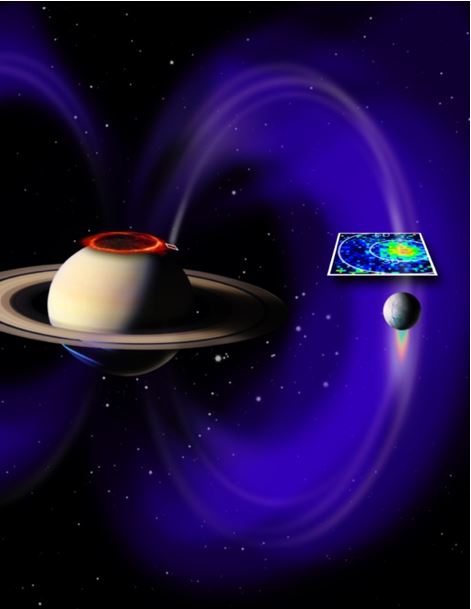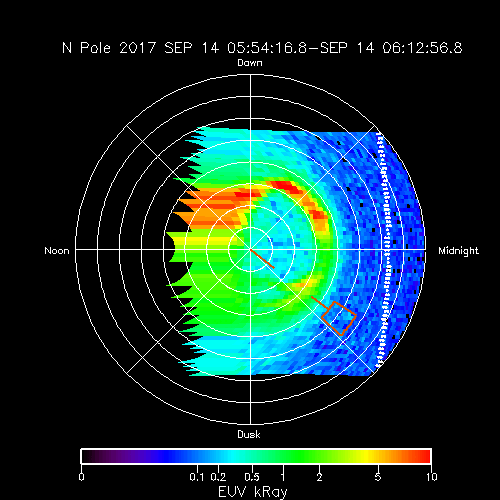Between 2004 and 2017, the NASA/ESA Cassini space mission explored Saturn’s environment from all angles with 293 orbits. Among the harvest of scientific results obtained with its array of instruments, the unique detection, in 2008, of Enceladus’ auroral ultraviolet (UV) imprint in Saturn’s atmosphere revealed a new case of planet-satellite interaction. , tenuous and transient. The plumes of material ejected by Enceladus are the first source of plasma in the Kronian magnetosphere, this cavity created by the planetary magnetic field in the solar wind.
Until then, only the auroral imprints of Jupiter’s Galilean satellites, intense and regular, were known. We owe to Renée Prangé, researcher at the Paris Observatory - PSL and co-author of the present study, the historic detection in 1996 of the UV auroral imprint of Io on Jupiter (see Ref [1]).

Nine years later, in 2017, during the final orbit of the Cassini probe before its plunge into Saturn’s atmosphere, the northern UV auroral imprint of Enceladus was again detected fleetingly, for more than 3h30, just at the predicted location and rotating around the pole at the orbital speed of the moon (Figure 2).

This second detection confirms the existence of Enceladus’ interaction with Saturn’s magnetic field. It also reveals that Enceladus dissipates less energy than Io, Europa or Ganymede on Jupiter due to Saturn’s weaker magnetic field. The auroral spot is too transient and/or too weak to be detected continuously.
The authors of the study also showed that the appearance of this UV signature coincided with an auroral radio activity of Saturn intensified by a compression of the magnetosphere by the solar wind, a link which had until now never been observed in the case of Jupiter. This control of planet-satellite interaction by the solar wind thus raises new questions on the influence of the solar wind in the internal magnetosphere.
The comparative study of planet-satellite interactions is a real challenge, at a time when similar auroral emissions are actively sought around exoplanets orbiting close to their star.
[1] Rapid energy dissipation and variability of the lo–Jupiter electrodynamic circuit, Renée Prangé, Daniel Rego, David Southwood, Philippe Zarka, Steven Miller, Wing Ip Nature
[2] This study appeared on 24/01/2024 in Planetary Science Journal.
doi : 10.3847/PSJ/ad0cbc
